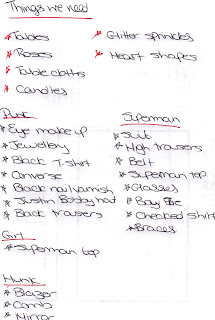Kesha is a contemporary American pop artist who began her solo career in early 2009. She was originally a backing singer for bands such as ‘The Veronicas’ and solo artists such as Britney Spears. Her fame mainly began when she appeared to be featuring in the debut song ‘Right Round’ with Flo Rida, then in late 2009 became even more popular amongst the youth when she released her single ‘Tik Tok’. In my opinion Kesha has the typical image of a pop/rock star. Her image would relate me back to the song to our music video ‘Superman’ as her individual style relates to our music genre. Also, she attracts the target audience which we are aiming to grab attention from as well.
Paramore
Paramore is an American rock band that is well known in many countries. The members consist of 3 boys and a girl who is the lead singer. This particular band had caught my attention when looking for rock bands which could have a similar genre to that of our production team due to their multi-coloured outfits and the lead singer. This is because in the song we are promoting, we also have a lead female vocalist. However, in the majority of their songs they have dominant beating of drums, this again reminded me of our song as we also have dominant beating of drums at the beginning and throughout the song. Therefore, I have come to the conclusion that if the group and I decide that our song would be promoting a band, they would have a similar image to that of Paramore.
Even though the majority of my artist research is based on solo artists, for example Avril Lavigne, I feel that a band would be a more suitable way of promoting our song ‘Superman’ as bands are more adaptable to peoples personal taste compared to solo artists. Additionally, due to our song having many instruments being played that are immediately distinct, a band would get more acknowledgement and recognition from the audience for playing their own music instead of using the help of Garageband.







 As Avril Lavigne is the artist I am following throughout my project, I have decided to compare her most recent album to one of her older ones. Firstly, here is an analysis of her album cover for the front of the album and the back also.
As Avril Lavigne is the artist I am following throughout my project, I have decided to compare her most recent album to one of her older ones. Firstly, here is an analysis of her album cover for the front of the album and the back also.

